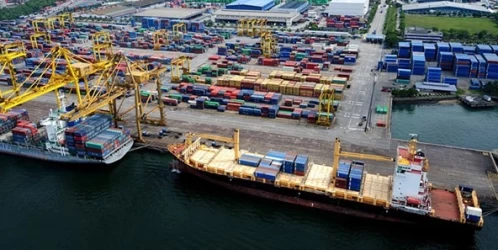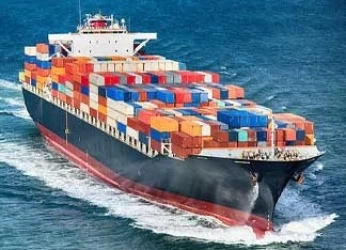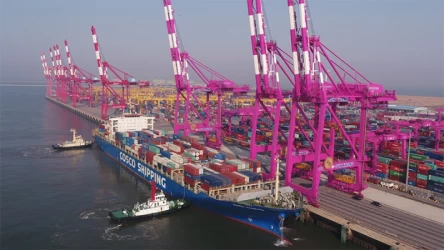Guide to Trade with Romania, Maritime Shipping
Romania, strategically located in Southeastern Europe, offers significant opportunities for international trade, particularly due to its access to the Black Sea. This guide will cover essential aspects of trading with Romania, focusing on maritime shipping, market entry strategies, regulatory requirements, and logistics considerations.
1. Understanding the Romanian Market
A) Economic Overview
Romania's economy has shown consistent growth, making it an attractive destination for foreign investment. Key sectors include:
- Information Technology: Romania has developed a robust IT sector, with numerous tech companies and startups.
- Manufacturing: The manufacturing industry, particularly in automotive and machinery, plays a vital role in the economy.
- Agriculture: Romania is known for its agricultural products, including grains, fruits, and vegetables.
B) Trade Agreements
As a member of the European Union (EU), Romania benefits from various trade agreements that facilitate easier access to the EU market. This includes:
- Reduced Tariffs: Lower import tariffs for goods traded within the EU.
- Single Market Access: Free movement of goods, services, and capital among EU member states.
2. Conducting Business in Romania
A) Market Research
Before entering the Romanian market, conducting thorough market research is crucial. Businesses should understand local consumer preferences, cultural norms, and market trends. Key considerations include:
- Target Audience: Identifying the right customer segments.
- Competitor Analysis: Understanding local and international competition.
B) Legal Requirements
Businesses need to comply with various legal requirements when operating in Romania, including:
- Company Registration: Registering with the Romanian Trade Registry.
- Licenses and Permits: Obtaining necessary licenses depending on the industry.
- Tax Obligations: Understanding VAT and corporate tax regulations.
C) Building Relationships
Establishing strong relationships with local partners is essential for successful business operations in Romania. Networking through trade fairs, business associations, and local chambers of commerce can facilitate connections.
3. Maritime Shipping to Romania
A) Importance of Maritime Shipping
Maritime shipping is a vital component of international trade, offering a cost-effective and efficient means of transporting goods. Romania’s access to the Black Sea provides advantageous shipping routes.
B) Key Ports in Romania
Several major ports facilitate maritime trade in Romania, including:
- Port of Constanta: The largest and busiest port in Romania, handling diverse cargo types and serving as a key gateway for goods entering and leaving the country.
- Port of Galati: Located on the Danube River, this port focuses on bulk cargo and has significant logistics capabilities.
- Port of Braila: Another important port on the Danube, primarily handling agricultural products and raw materials.
C) Types of Maritime Transport
Businesses can choose from different maritime shipping options, such as:
- Full Container Load (FCL): Suitable for large shipments that fill an entire container, providing cost efficiency for bulk goods.
- Less than Container Load (LCL): Ideal for smaller shipments that share container space, allowing businesses to reduce shipping costs.
4. Shipping Process
A) Preparing for Shipping
To ensure smooth maritime shipping, businesses should follow these steps:
- Documentation: Prepare all necessary shipping documents, including the commercial invoice, packing list, and bill of lading.
- Packaging: Properly package goods to prevent damage during transit and ensure compliance with international shipping standards.
- Choosing a Freight Forwarder: Collaborate with a reputable freight forwarder who can manage logistics, customs clearance, and transportation.
B) Customs Procedures in Romania
Upon arrival at Romanian ports, goods must undergo customs clearance. Key steps include:
- Customs Duties and Taxes: Businesses must be aware of applicable customs duties and VAT for imported goods.
- Required Documentation: Submit required documents to customs authorities, including invoices and transport documents.
- Inspections: Some goods may be subject to inspection by customs officials to ensure compliance with EU regulations.
5. Challenges in Trading with Romania
A) Regulatory Compliance
Navigating the regulatory landscape in Romania can be complex. Businesses should ensure compliance with both local and EU regulations regarding product safety, labeling, and environmental standards.
B) Language Barriers
While English is commonly spoken in urban areas and among business professionals, language barriers may still exist in rural regions. It may be beneficial to have documentation translated into Romanian and to hire local representatives.
C) Cultural Differences
Understanding Romanian business culture is crucial for building successful partnerships. Key aspects include:
- Personal Relationships: Building trust and personal relationships is important in Romanian business practices. Face-to-face meetings are often preferred.
- Negotiation Styles: Negotiations may be formal and relationship-oriented, requiring patience and an understanding of local customs.
6. Conclusion
Trading with Romania presents numerous opportunities for businesses looking to expand in Europe. By understanding the local market, complying with regulations, and utilizing efficient maritime shipping options, companies can successfully navigate the complexities of international trade. With its strategic location, modern port facilities, and growing economy, Romania remains a key player in the European trade landscape.
If you have any specific questions or need further assistance, feel free to ask!











